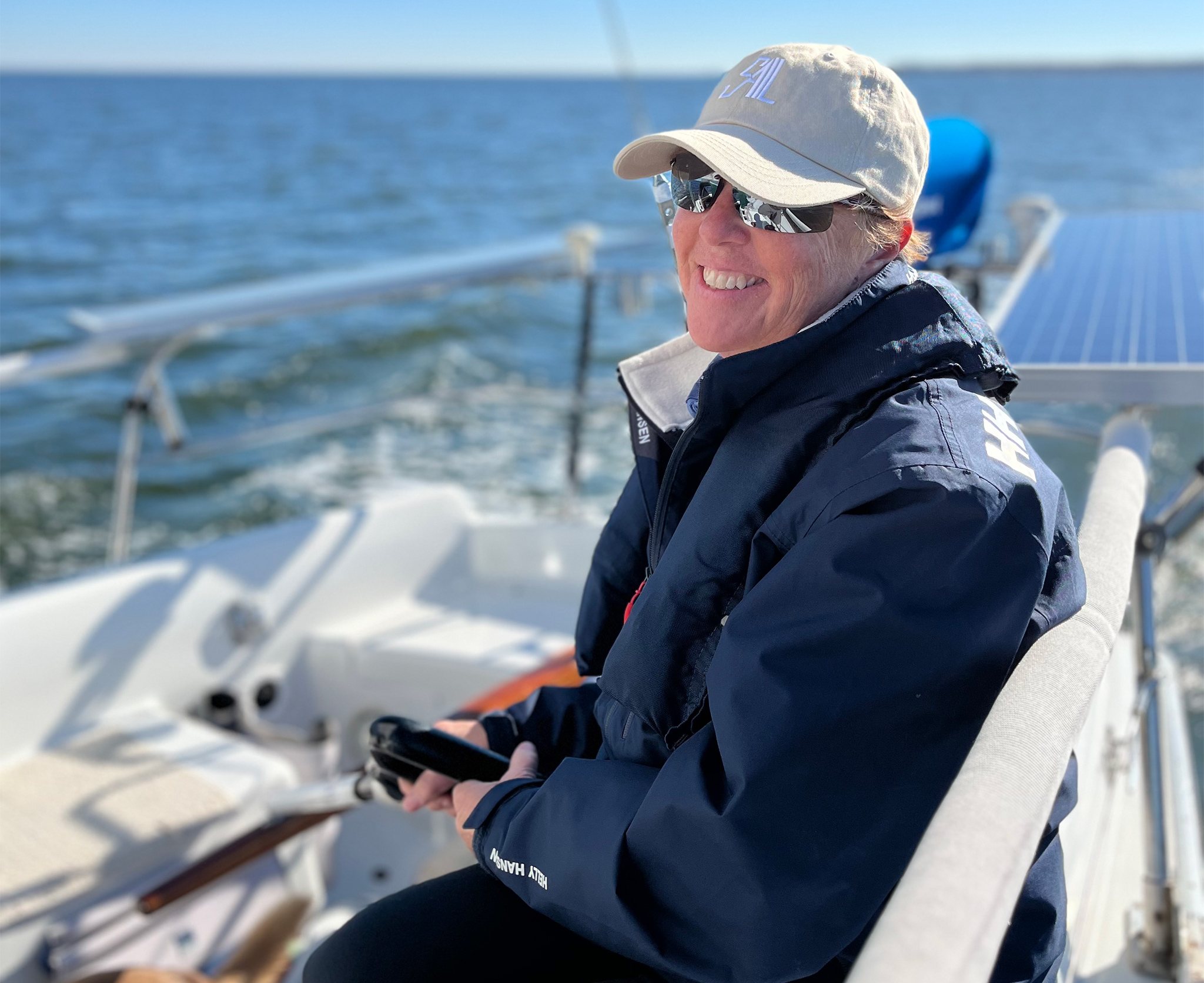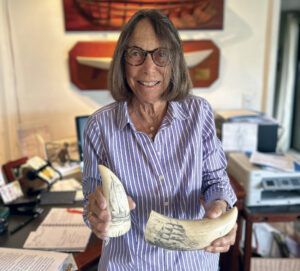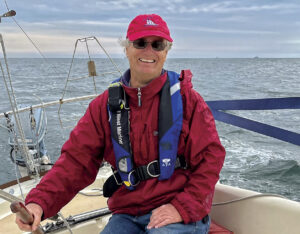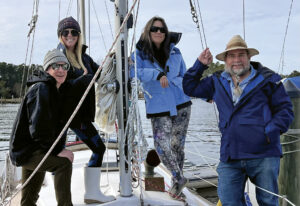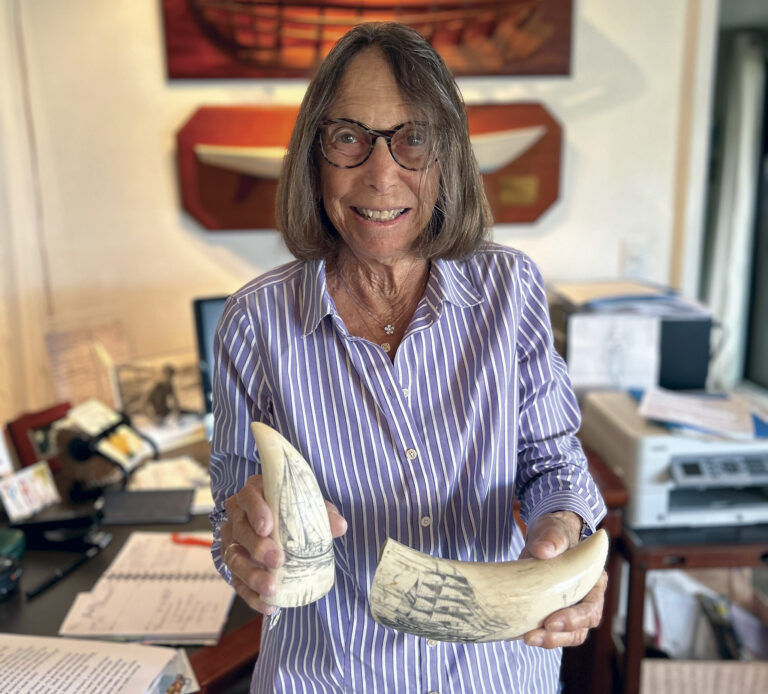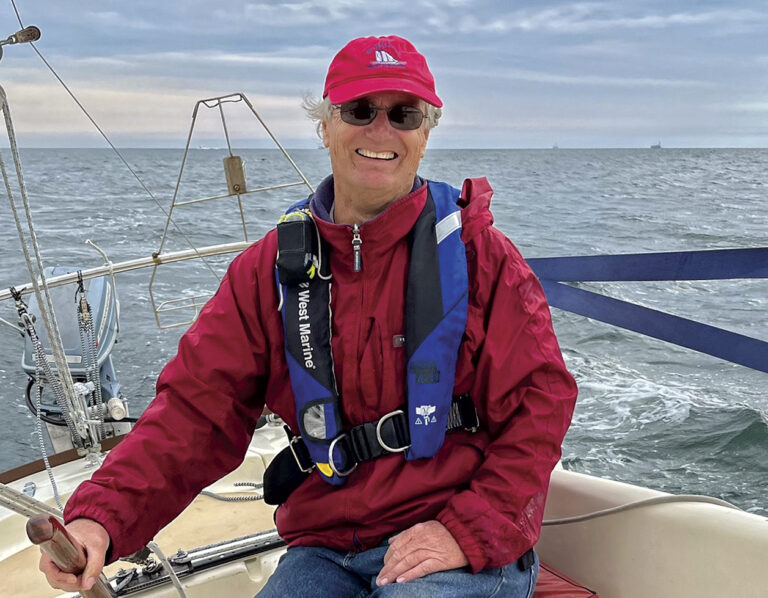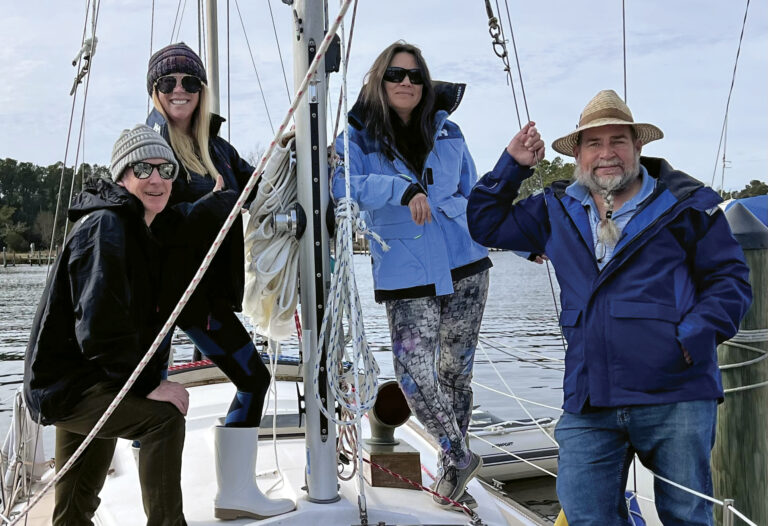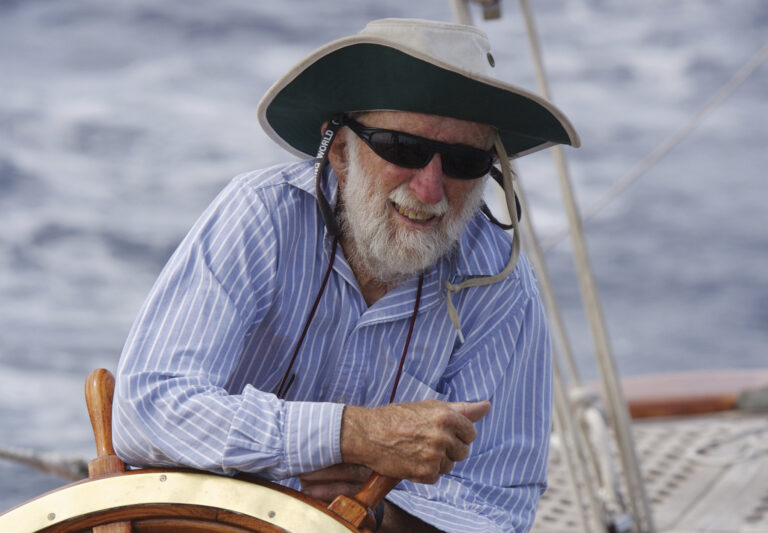If you believe that our earliest memories can imprint upon us our future—like baby birds who will identify themselves with the first living creature or object they see—then Jesse Terry’s 39-foot ketch Abigail, designed by John Alden, was a foregone conclusion long before she came into his life.
Growing up in Essex, Connecticut, his first memories were of watching his parents and their friends restore a 48-foot wooden yawl in the family’s backyard over the course of a decade. Designed by Sparkman & Stephens and built in 1938, Tomahawk became not only Jesse’s jungle gym but a revelation of engineering and structure in its frames, planks, and other members, rendered beautiful and magical as a sailing vessel that offered endless fun.
“Wood boats were very close to my heart, I always looked at them as objects of great beauty, Jesse says. “I really knew no other way of what type of platform to sail.”

Throughout his youth in the sailing clubs of Essex, and then at UPenn, he sailed the typical fiberglass racing dinghies, and in his 20s he bought a 20-foot O’Day “to make sure I could sail a larger boat. But I quickly knew I wanted to have a wood boat, so I bought a 32-foot K. Aage Nielsen sloop. That gave me an introduction to what it took to maintain and operate a wood boat.”
Even then, he says, he began looking for the one—the one he would want to give to his kids, the one he would sail and race in the ocean, the one he knew would be worthy of all the time, money, patience, commitment, and elbow grease that would be required. He started poking around boatyards from Rhode Island and Cape Cod to Maine. Though the traditional racing designs of the ’30s through the ’50s were typically yawls, he was looking for something a little different.
Then one day in Maine 10 years ago he found her, a 1956 Alden ketch built by Seth Persson right after he built three-time Bermuda Race winner Finisterre. Persson built Abigail in Old Saybrook, Connecticut, just downriver from where Jesse grew up playing on Tomahawk. “It felt like I was bringing her home,” he says.
Abigail caught his eye because her lines are derived from fishing schooner designs, “more specifically Alden’s personal yacht Malabar XII. Alden and one of his Malabars last won the Newport to Bermuda Race in 1932,” Jesse notes. While he’d always liked the schooner hull shape, the sailplan and rig weren’t practical for his purposes. Abigail, with her ketch rig, was the best of both worlds. “I have yet to see a similar boat to Abigail and I appreciate having a unique boat.”
“Abigail’s design and size were important to me. I wanted a wood boat approximately 40 feet in length as I felt it was a balance between enough size to go offshore while also being small enough that I could maintain efficiently based on time and cost.” For example, he says, “I can do a coat of varnish in one day.”
The ketch rig is vastly flexible, allowing for sailing configurations that can be comfortable for family and friends, yet optimized for speed or heavy weather.
“My kids at age 1 were on the boat and we tied their car seats to the mizzen mast,” he says. (They’re twins, now 9 years old and seasoned sailors.) “The rig is just so easy because the sails are very manageable, and versus a yawl, the mizzen is a real sail size…to provide horsepower. The main is small so that it’s easily managed or can be lowered entirely to sail well jib and jigger. There is a furling genoa and a self-tacking forestaysail, which provide a lot of options as the wind picks up. In addition to traditional symmetrical spinnakers, I utilize mizzen staysails off the wind, which are a ton of fun and easy to use no matter who is on board.”
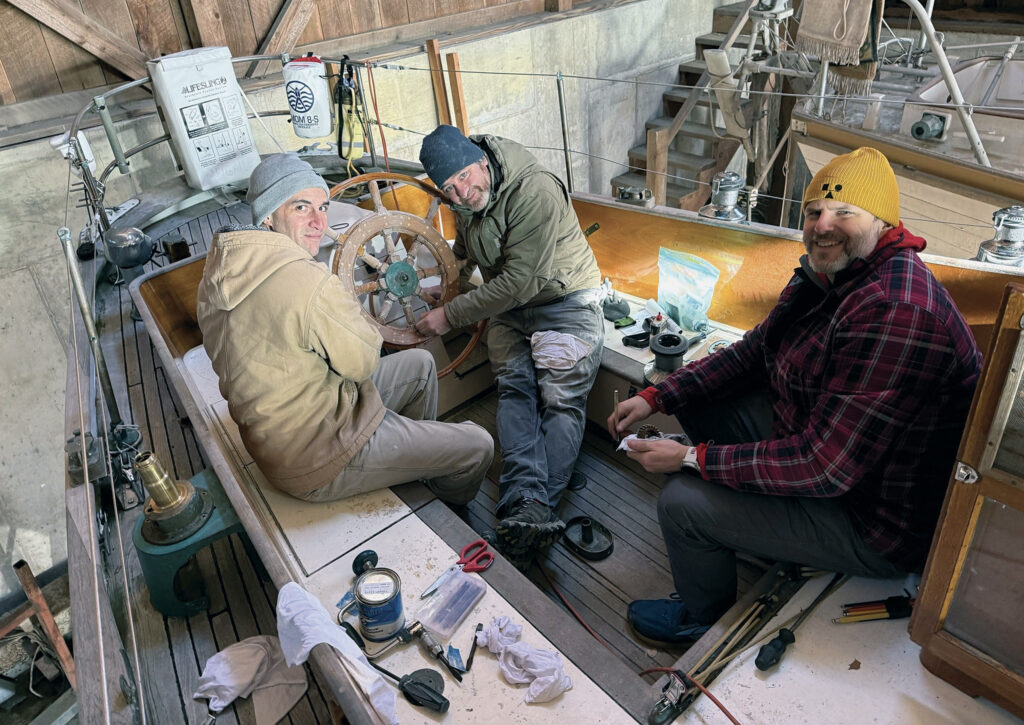
With his eyes on offshore sailing, and specifically the 2022 Bermuda Race, Jesse and a few close friends from high school and college—who are his regular race crew—started preparing the boat. Over the first winter, they replaced 4,000 fasteners in the hull. Then they focused on the rigging, and Jesse ordered new sails to optimize the two-masted rig.
“We worked on the teak decks and replacing through hulls and plumbing. We added some modern gear like electronics, new winches, and better blocks, and tested the new gear by participating in classic yacht races up and down the New England Coast,” he says. Abigail finished fourth in her class in the 2022 Bermuda Race, far exceeding Jesse’s expectations, especially as Stan and Sally Honey’s Illusion, the overall winner, was in the same class.
Last year’s Bermuda Race, he says, was challenging with a lot of upwind work in big breeze. “I never expected we would sail that long with a storm jib up. When the wind was getting north of 35 knots, we took down the main, we had the storm jib up, then the majority of the configuration was three reefs in the main and the storm jib and the mizzen maybe up or not, depending on how severe conditions were. She is honestly a good boat to be in, in those conditions…you just have so many ways to deal with sail area.”
In 2023, he entered the Marblehead-Halifax Race as a feeder for summer cruising in Newfoundland, but the light, upwind weather stymied them, and like several other racers, they didn’t finish in the allotted time. So, this year he and Abigail are back, taking on Marblehead-Halifax—the 40th running of the race—which starts on July 6.
Typically, he says, he enters Abigail in the Classic Yacht Owners Association series of summer races between Newport and Penobscot Bay, Maine, including the famous wooden boat racing gathering, the Eggemoggin Reach Regatta. This lets him combine fun racing with family cruising. Competing in these events rewards him “with great pride at having maintained her to a level that allows to still be up for the challenge 68 years after she was built.”
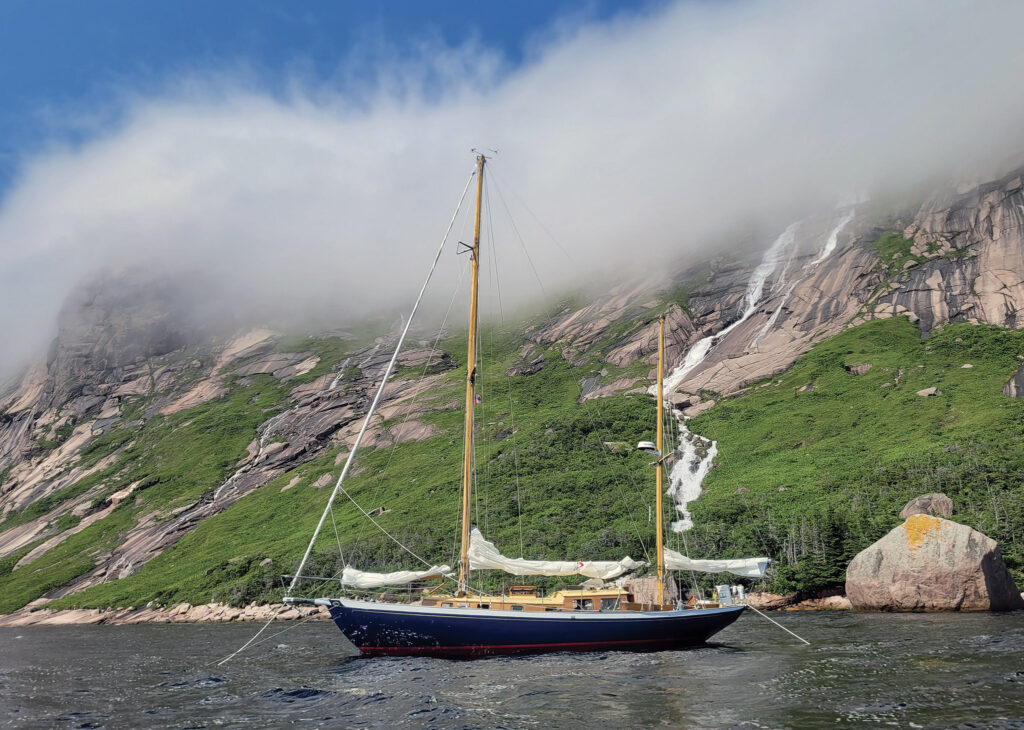
Working on the boat he finds equally fulfilling. “They say chopping firewood heats you twice, and this is the same. I take great satisfaction doing this work and sharing that work,” he says. His father helps him as do his kids and friends, and the work and the boat become the focal point of a sense of community.
“The community from a wood boat can’t be underestimated,” Jesse says. “It’s such a great network of other people.”
Another aspect to Abigail that he enjoys is simply “the challenge of knowing how to sail it in all of the conditions optimally.” It’s not as though today’s sailors know how to get the most out of this hull shape, rig, and multitude of different sail shapes, so Jesse spends a lot of time reading books from the 1940s and ’50s to discern the subtleties. “You’re honestly collecting knowledge from another generation trying to find out what is the best thing for these older shapes, particularly for such a unique rig and hull shape too.”
Jesse lives and works in New York City, what he calls “an efficient, pedestrian, urban life.” When he’s on the water, “I feel like I’m surrounded by beauty. Sailing Abigail allows me to slow down, enjoy the moment, and connect with nature. I believe having a wood boat allows me to further connect with the environment. I appreciate the natural materials, the ability to maintain and restore it, and preserving the history of wood boats on the water.”
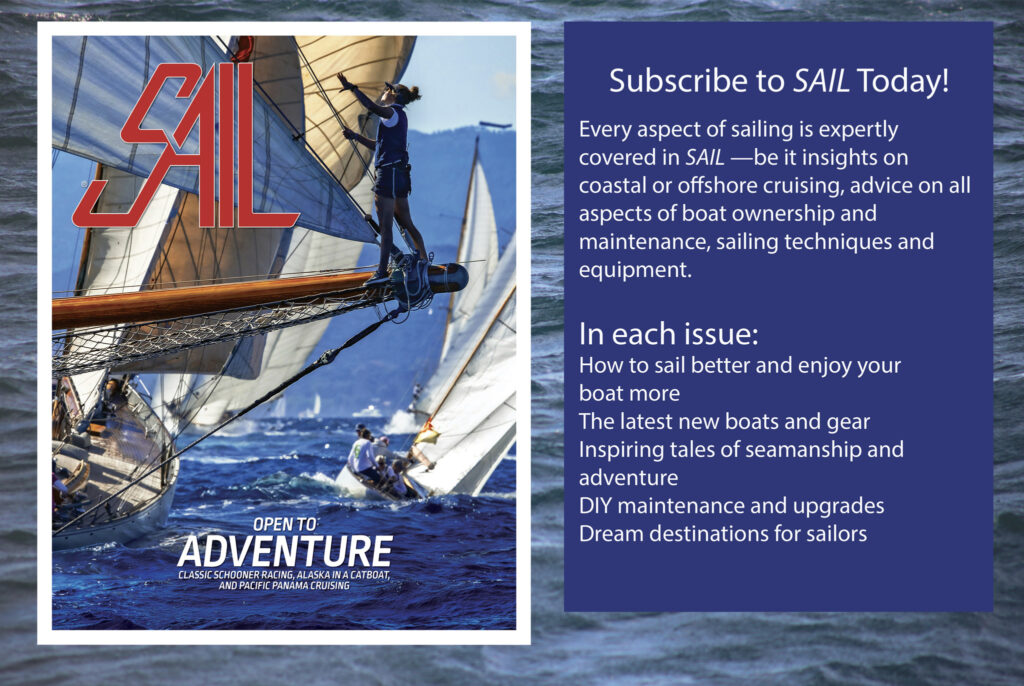
May 2025

